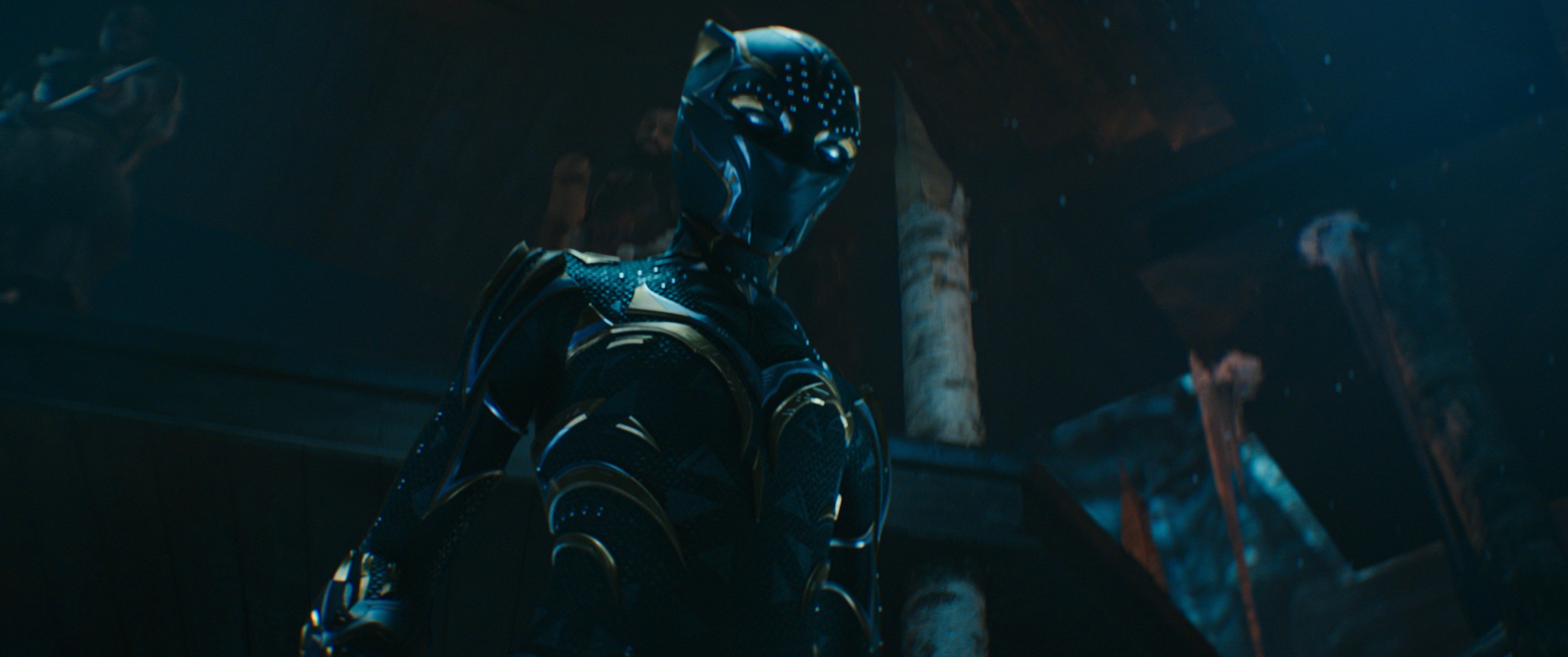
That Marvel’s Black Panther: Wakanda Forever strikes a more funereal tone than its predecessor was to be expected. Given the passing of star Chadwick Boseman, the superhero sequel was always going to focus on mourning the noble King T’Challa he so powerfully portrayed.
But it may come as a surprise that absent from Wakanda Forever as well are the rich, eye-popping colors that defined Black Panther as an exceptional feat of filmmaking. Obscured by murky, downcast hues, this superhero sequel seems to confirm that not even a director of Ryan Coogler’s caliber can withstand the imposition of Marvel’s dreaded “house style” of cinematography.
Much has been written about Marvel’s efforts to standardize its production pipeline in terms of color and on-set filming to better accommodate the head-spinning amount of VFX work utilized in its movies. Especially as that universe has increased its theatrical output and expanded to television throughout Phase Four (all the while exerting intense pressure on VFX studios responsible for working on the vast majority of shots in its releases), Marvel has placed its cinematographers in the terrible position of relying upon flat, low-contrast lighting to ease its post-production processes.
Helpful though the visual consistency of this lighting style may be when it comes to editing color schemes and incorporating CG elements, it homogenizes the color palettes on display in Marvel films and makes it near-impossible for individual characters, even individual story beats, to stand out amid a sea of unrelentingly drab, overcrowded composite shots. One need only look back on the uniformly hideous visual sludge of Avengers: Endgame to see the artistic limits of such a strategy.
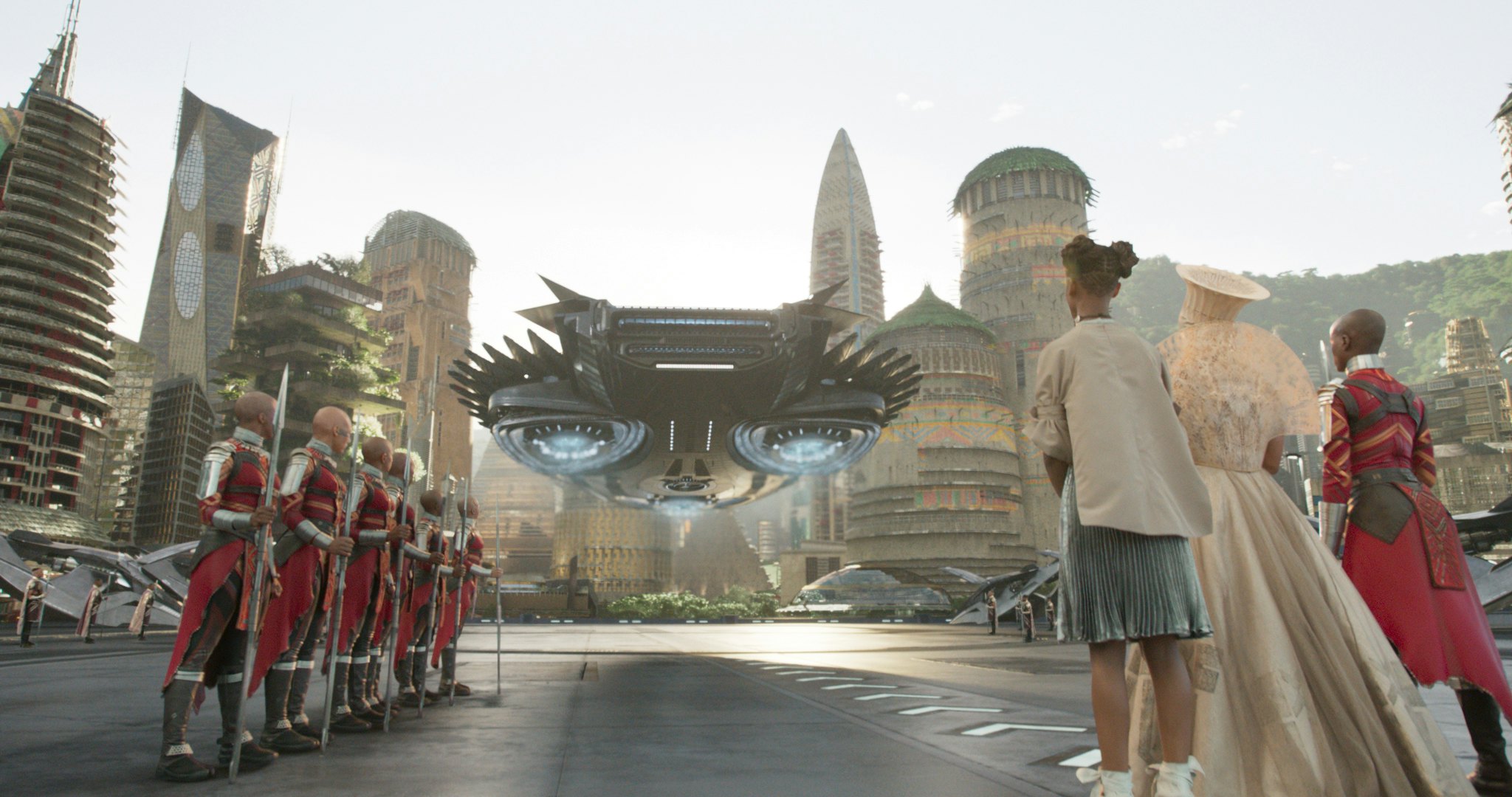

With its vision of the Afrofuturist nation of Wakanda, Black Panther was a notable departure from this new norm (which has only become more inflexible in the four years since that film’s release). Black Panther’s Oscar-nominated director of photography Rachel Morrison elevated even large-scale action sequences through bright, richly textured colors and naturalistic lighting. The result was that rare Marvel movie that kept sight of its characters and remained invested in their world even amid CG-assisted spectacle. Her keen eye for contrasts and shadows offered Black Panther the kind of unique visual identity that no Marvel film has showcased since.
Wakanda Forever — which replaces Morrison with director of photography Autumn Durald Arkapaw — offers little respite from Marvel’s house style. Its overwhelming dinginess feels especially depressing and egregious for how it drains a once-vibrant world of the crisp, glimmering colors that distinguished it. Durald Arkapaw, whose hazy, dreamlike aesthetic stood out in indies Palo Alto and Teen Spirit, entered the Marvel machine by shooting the first season of Loki. That series, never meant for the big screen, found Durald Arkapaw flooding the frame in single-tone purple neon but otherwise shrouding the characters in shadow, a common Marvel tactic to distract audiences from the enervating fogginess of its product.
“A brutal comedown from the versatility and tangible textures of Morrison’s approach.”
Durald Arkapaw’s work on Wakanda Forever renders the film similarly dull and difficult to parse, especially in underwater sequences that introduce the ancient kingdom of Talokan. Presented as another civilization that has existed for centuries in secret, its technological advancement fueled by access to vibranium, Talokan is set up as an intriguing counterpoint to Wakanda. It’s intended to reflect Indigenous Mesoamerican traditions and styles with the same vibrancy that Wakanda reflected the influence of various African tribes and cultures in the first Black Panther.
If only it were possible to see the assuredly impressive work of costume designer Ruth E. Carter and production designer Hannah Beachler in bringing Talokan to life. The presiding gloom and shallow depth of field employed by Durald Arkapaw obscures the new world Wakanda Forever claims to explore. Equally distracting are the sequel’s extensive night-time sequences, which are too dark to distinguish characters’ facial features. It’s a brutal comedown from the versatility and tangible textures of Morrison’s approach.
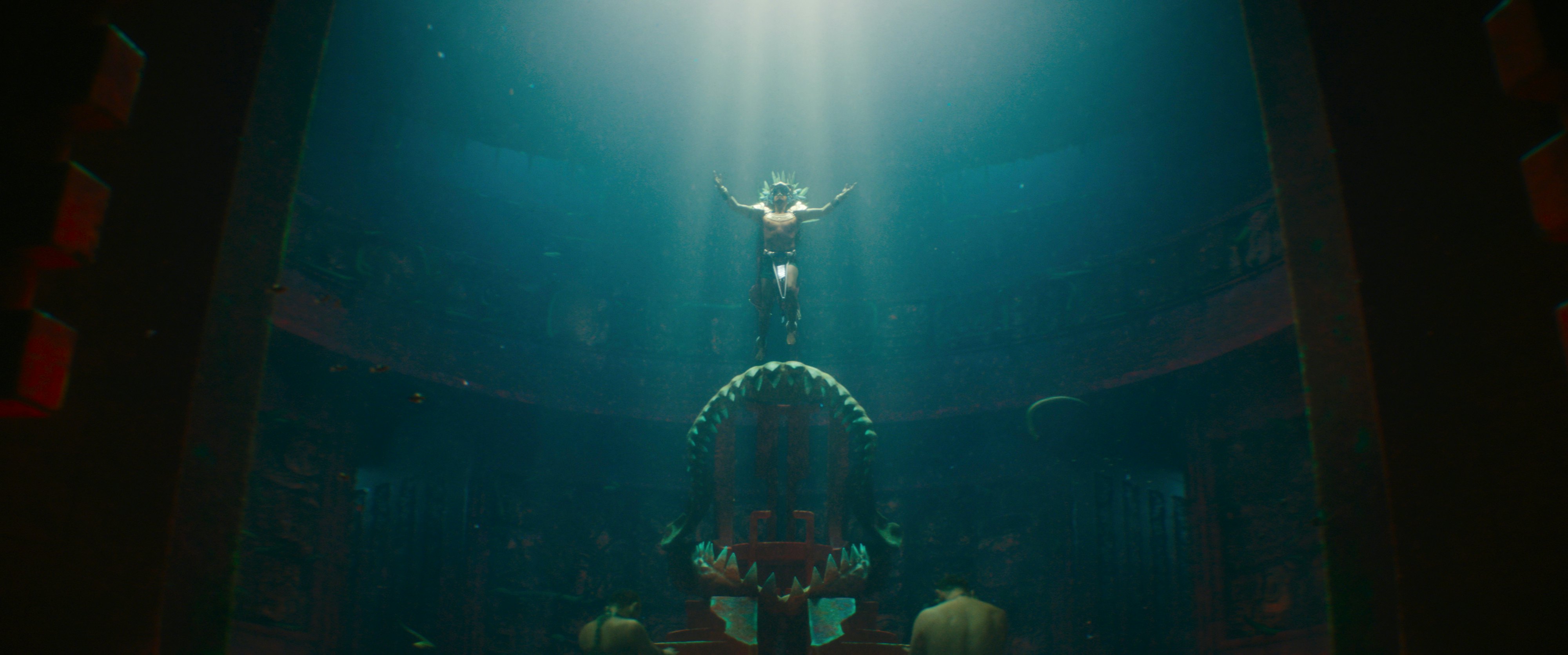
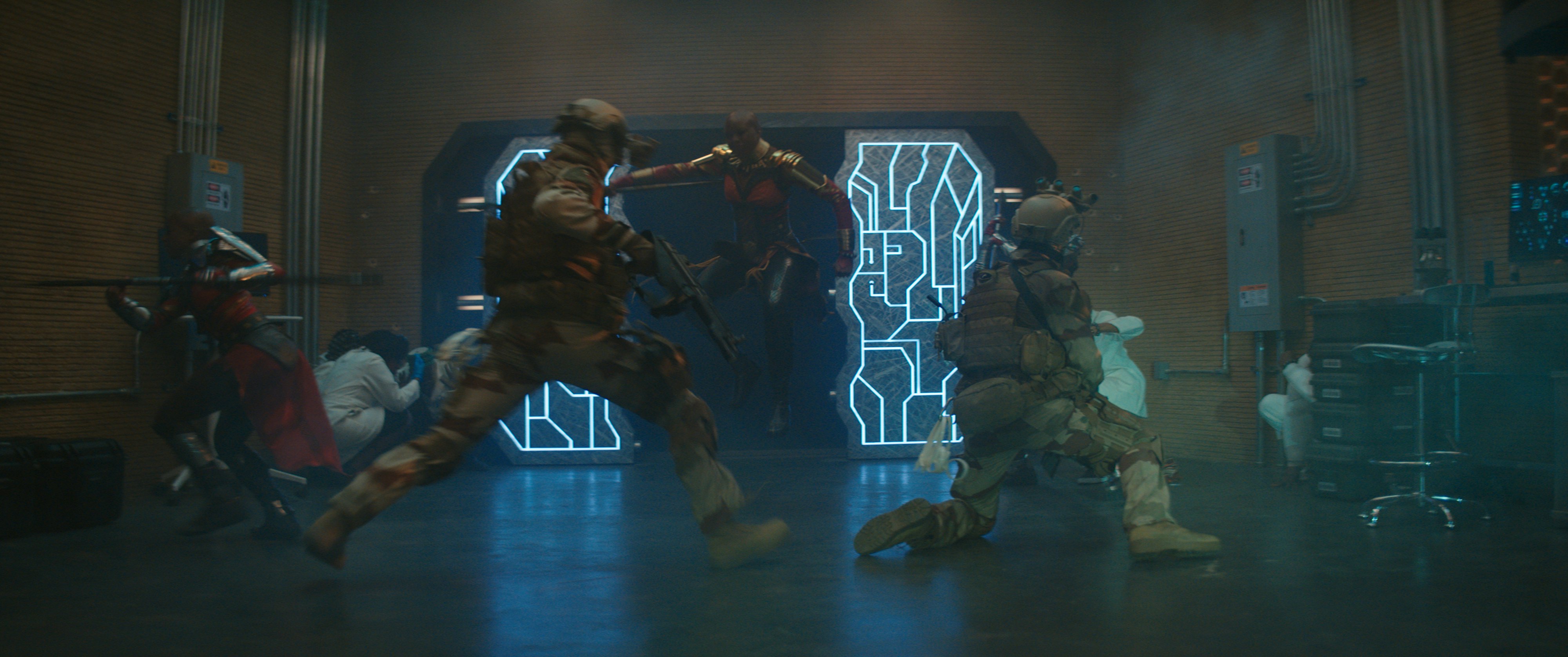
Returning director and co-writer Ryan Coogler has discussed the “fog of loss” Wakanda Forever sought to convey by using anamorphic lenses instead of spherical ones, a decision that warps the sequel’s images while reducing their sharpness. For directors of photography, shooting with spherical lenses — as Morrison did throughout Black Panther — produces images that emphasize realistic detail and tactile sensation. Morrison used a circular design theme throughout Black Panther, especially in Wakanda-set sequences. “Everyone is the same distance from the center; everyone is equal,” she explained to American Cinematographer Magazine. The circular design of curved-glass elements inside her spherical lenses bolstered this creative decision.
In Wakanda Forever, by contrast, Durald Arkapaw’s anamorphic lenses — better for tracking movement across the busy, large-scale action setpieces that tend to dominate Marvel finales — fare worse with the close-ups required of intimate character beats. The more ovular elements inside anamorphic lenses tend to distort images, reduce clarity, and require “de-squeezing” in post (a process that comes in handy for films reliant on VFX and that lend themselves to Marvel’s requisite lens flares and bokeh effects). Wakanda Forever’s close-ups are marred by this approach, which keeps backgrounds blurred and softens focus at the expense of all aesthetic detail besides generic bluish-purple tints.
Gone are the deep light shafts, dramatic contrasts, and color saturations that made Morrison’s work (and the world of Wakanda) feel so movingly alive. Black Panther’s majestic sense of scale stemmed in part from Coogler’s decision to keep the backgrounds in focus, allowing audiences to be continually awestruck by all the vibrant costuming and production design on display. In Wakanda Forever, he’s lost that battle, and the reality of the film’s world remains out of reach as consequence.
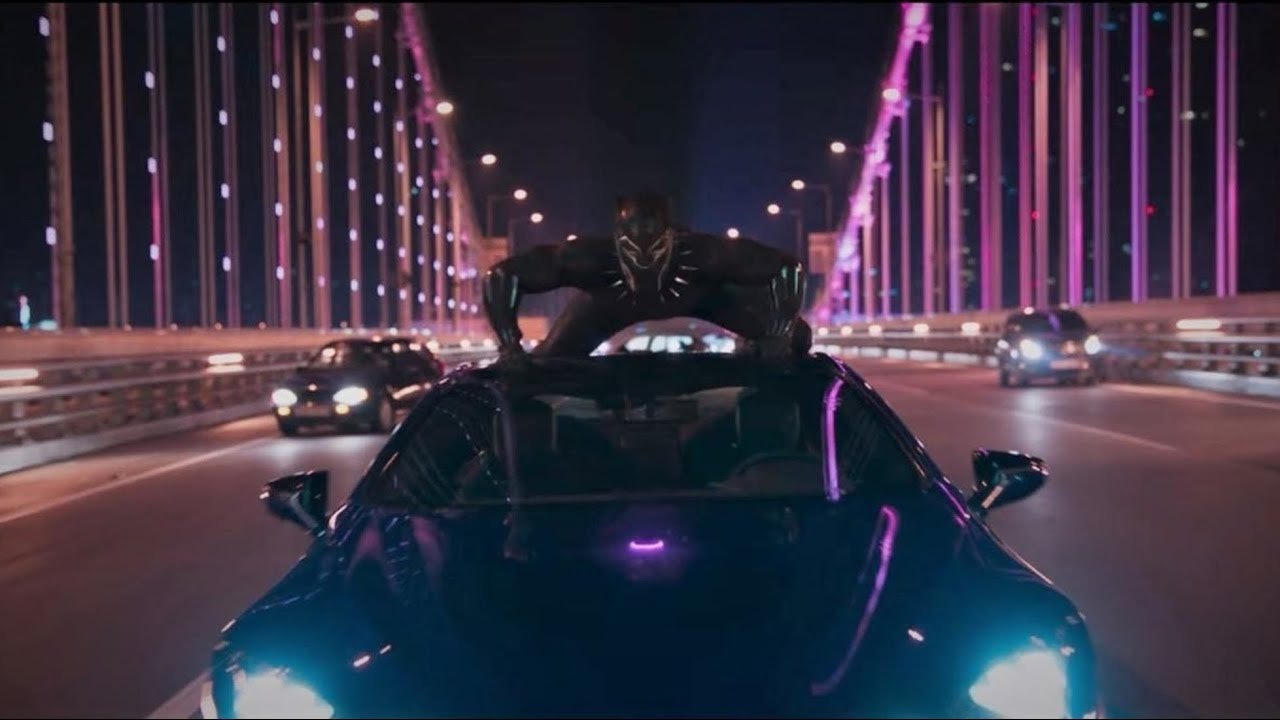
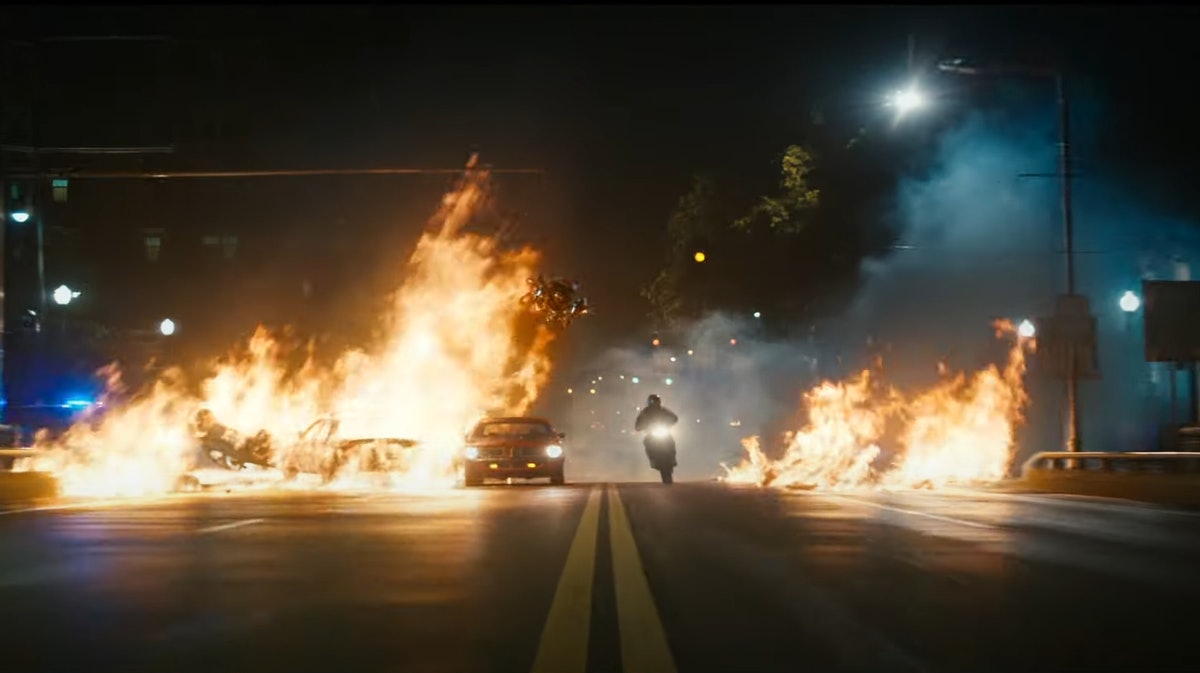
Morrison worked closely with Coogler, visual-effects supervisor Geoffrey Baumann, production designer Hannah Beachler to ascertain what could be accomplished on set versus in post during Black Panther. While it’s more than likely that Durald Arkapaw’s efforts to achieve a more somber, grief-stricken aura for Wakanda Forever were undercut by VFX overload — the underwater sequences seem to have been particularly ill-served during post-production — the loss of clarity that accompanies anamorphic lenses can’t have helped.
Wakanda Forever’s visuals also feel conspicuously bland in instances where Coogler replays Black Panther’s greatest hits, to diminished effect. A high-speed car chase on the streets of Busan, in which Boseman’s T’Challa faced off against mercenary Ulysses Klaue (Andy Serkis), was an exhilarating highlight of Black Panther that made striking use of the way Korea’s skyline appears to glow by night, as well as the coexistence of futuristic and classic designs that defines the city’s architecture.
“This sequel imposes a sluggish digital sheen.”
One can sense Coogler straining to recapture that magic by setting Wakanda Forever’s car chase around MIT’s campus in Cambridge, the architecture of which is comparably wide-ranging (if far less colorful than that of Busan). Yet, put simply, the thrill is gone. Even with the addition of a muscle car, a motorcycle and an Iron Man suit, the sequence puts its moving parts to unimaginative use, and editors Kelley Dixon, Jennifer Lame, and Michael P. Shawver cut it together too frantically to clarify any of the dimly lit action. Wakanda Forever’s climax, staged on a barge in the Atlantic, is even more of a disappointment, succumbing to the plodding, washed-out CG bloat that pervaded lesser-loved Marvel sequels like Thor: The Dark World.
There’s a curious artifice to Wakanda Forever that works even against the utopian kingdom of its title. Lacking the dynamic, tactile tones that made Wakanda feel thrillingly real and afforded Black Panther a fantastical sense of space, this sequel imposes a sluggish digital sheen, sapping the nation of its past glory and reducing this series’ exploration of its vivid world to an empty time-filler. Such monotony might have passed muster on streaming, but to watch it seep into a Black Panther sequel is a dark, dispiriting reminder of how artless and impersonal the MCU has become.
Black Panther: Wakanda Forever is now in theaters.







